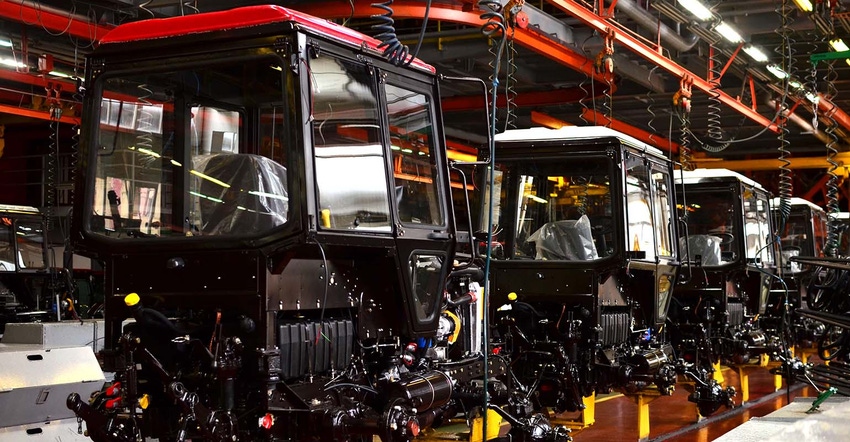
How far ahead do you typically plan when making new or used machinery purchases? That time frame may be changing.
In the past, a six-month window was often sufficient. But in today’s environment of red-hot demand and unprecedented supply chain challenges, stretching that planning window longer may become the new norm.
Tractor Zoom — a company that tracks farm equipment purchase and value data — offers some information to flavor this conversation.
For example, in the first quarter, row crop tractor volumes at auction tumbled 55% lower year over year, and self-propelled sprayer volumes were cut roughly in half over the same period.
Inventory at dealerships also remains thin. Greg Roberg, vice president of sales with AgDirect, explains what’s going on: A lot of inventory is currently “on the farm” — that is, farmers who purchased new equipment are still using their current machinery until the new purchases arrive.
“That’s why there’s not much inventory on dealership lots,” Roberg says. “As soon as new equipment is delivered, the trade-in goes directly to the dealer’s shop for inspection and then onto another farm.”
A decade ago, a once-in-a-generation drought drove up commodity prices and heightened equipment demand, but that was still very different from the situation that has unfolded this year, Roberg adds.
“In 2012-13, we saw low inventory, but that wasn’t because of supply chain challenges,” he says. “You’d still see equipment on the dealer’s lot. This is unprecedented.”
Focus on future
Because of all of this, experts agree: It’s past time to map out equipment needs for 2023, and it’s not too early to look ahead to 2024.
“If you need something in the market right now, there’s going to be a wait on it,” says Jordan Clarke, sales director with Ritchie Bros. “I’m even hearing that on tires, parts and the availability for service — let alone for purchasing new or used equipment.”
A lot of people are finding that out the hard way, unfortunately.
“From a buyer’s perspective, you need to plan sooner than later because there will be significant delays,” Clarke says.
Auction prices remain at a strong premium for now, he adds. Some combine and tractor auctions have fetched record prices in recent months.
Scorching late-model prices are understandably high, Clarke says, but the trickle-down demand is eye-opening all the way down. He cites a recent auction of a cab-over semitruck as an example. The vehicle was a 1980 model with more than a million miles on it, which sold for $59,000.
“Five years ago, that would have been an $8,000 truck,” he says.
Forget 6 months out
Bottom line — that proverbial six-month planning period no longer applies.
“Our mindset for 2022-24 is to look two years ahead on equipment needs, whether new or used,” Roberg says. “That’s the window farmers should be looking at.
“Salespeople are often in the best position to know the availability of new equipment and any trade-ins that may be coming in. Evaluating your equipment needs for two years may seem like a long time, but that’s what farmers should be looking at until we work through the supply chain issues.”
Rising interest rates can add to the frustration, Roberg notes, so it may also be prudent to line up financial approvals before purchasing equipment.
That will help lock in rates for a period of time. Also, it supplies a bit of negotiating power because sellers know that you already have approved financing and know what you can comfortably afford, Roberg concludes.
About the Author(s)
You May Also Like






